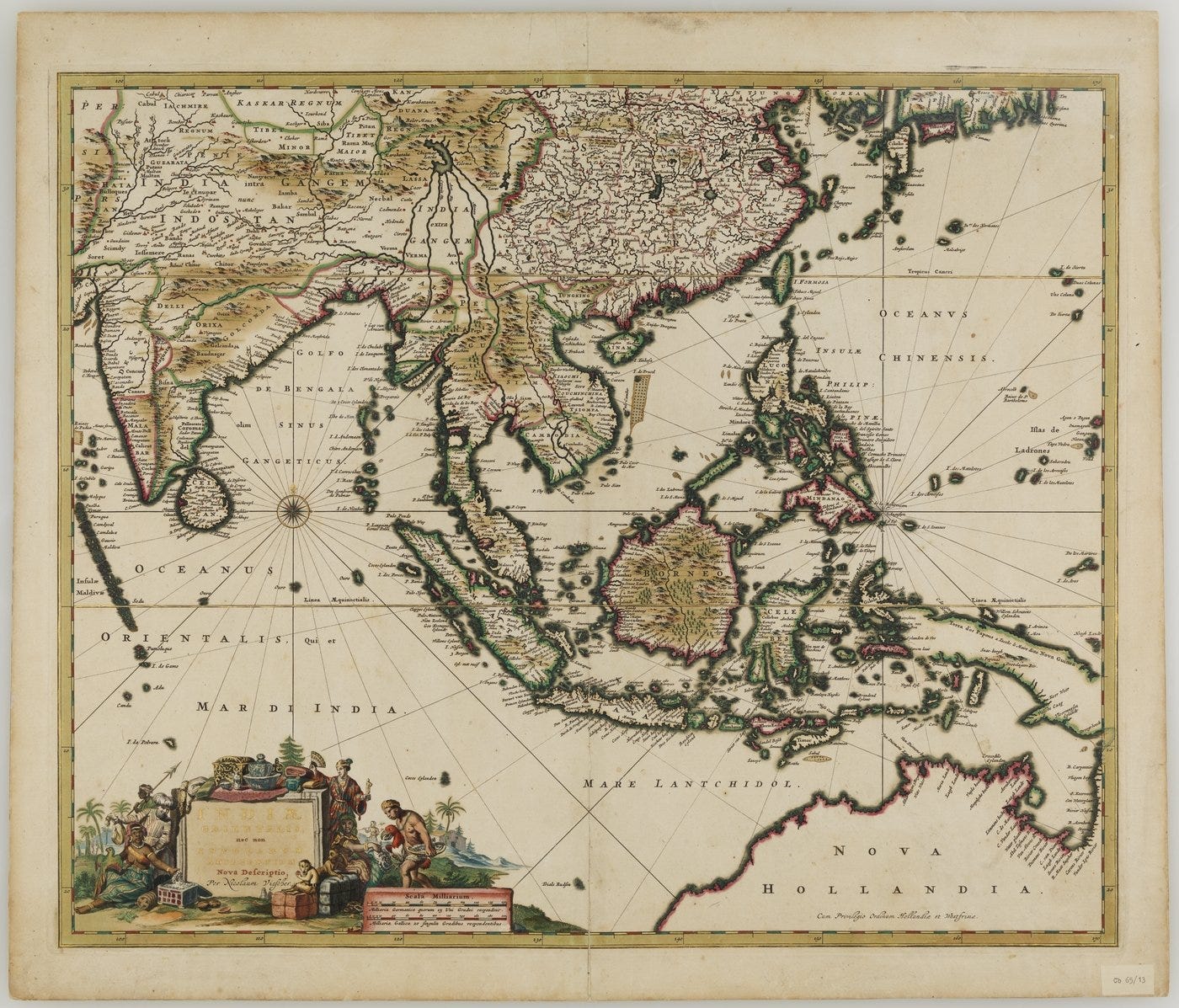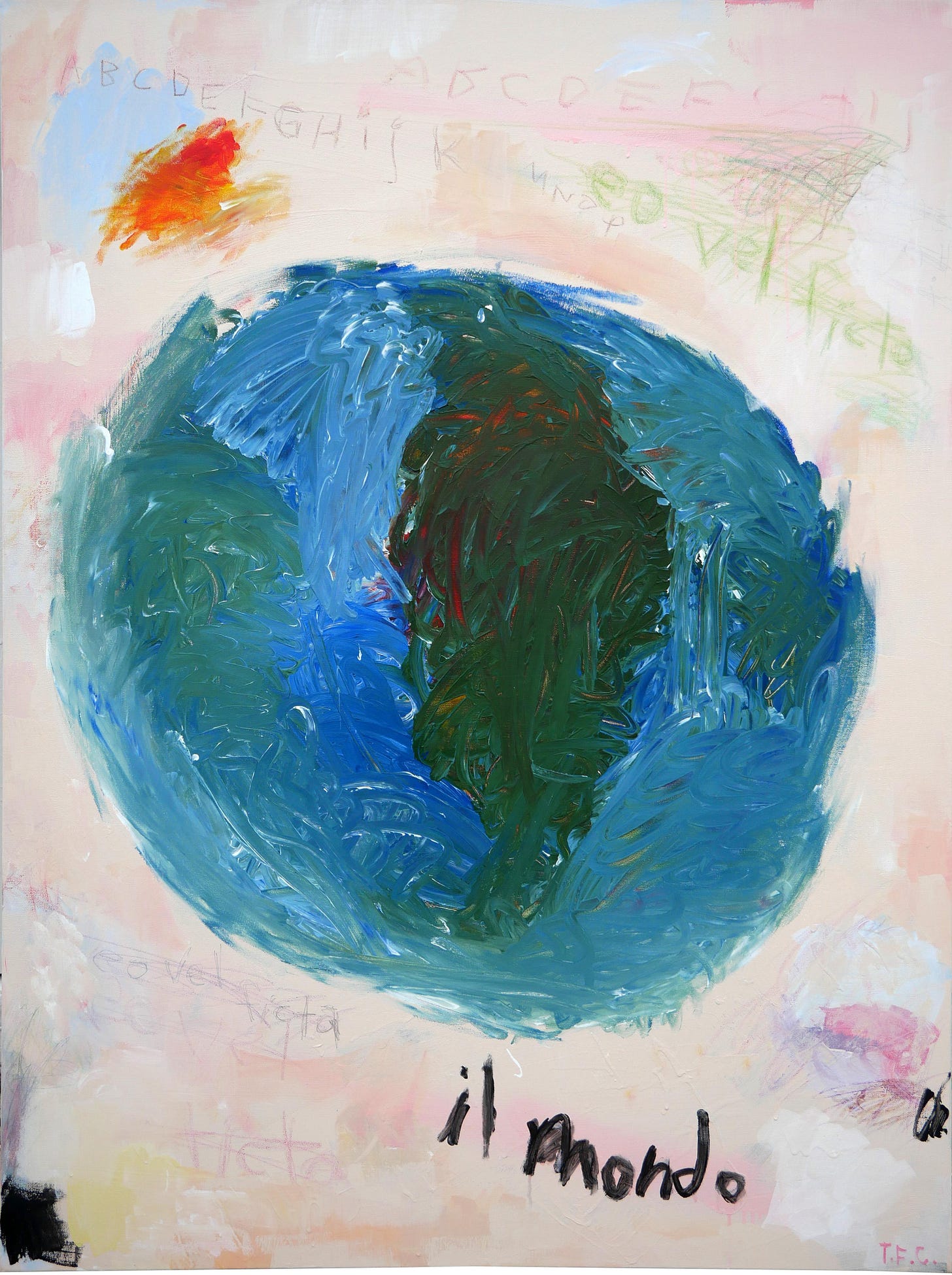How Paint's Made
Tracing the Path of Sustainable Color Through the Ages From Pulverization to Palette
This is Part 3 of my Paint Mill Series. Start with Part 1 and Part 2.
Have you ever ordered something atrocious from a restaurant?
The ingredients listed on the menu seemed right up your alley, but when they came together the result was a steaming bowl of hot mess?
Like ingredients to a recipe, referring to only the raw materials used in paint across different historical eras may mislead us when we are trying to make a judgement about sustainability of the final palettes. Other factors of the supply chain like machinery, logistics, labor, and lightbulbs are also worthy of examination in order to fairly compare.
Example Fun Time:
Imagine you are trying to calculate the ecological footprint of a mango. Even after looking at fertilizer, pesticide, and water used for mango cultivation, the overall sustainability still depends on how the mango is processed, preserved, and where it's consumed. A mango grown and eaten in your backyard, for instance, is most likely a lot more sustainable than one cultivated and harvested from a tree in India, cut into pieces, frozen, shipped to a grocery store in the U.S., and subsequently landfilled as food waste.
In the case of paint, about one quarter of its overall environmental impact, which is around 20 kg of carbon dioxide (CO₂-e) per 750 g of paint, is generated by paint manufacturers themselves, meaning the remaining 75% exists within the supply chain. Let’s take a journey through the production cycle of paint to unpack how each step impacts the bigger, greener picture.
Phase 1: Raw Material Transportation
Contrary to popular belief, Dutch Golden Age artists did not have the ability to spawn ingredients to their studio (so archaic). Instead, the canals served as the ultimate transporter in the lowland country.
Challenging previously underdeveloped transportation infrastructure and limited connectivity, the Dutch East India Company (VOC) crucially introduced pigments and spices (not to mention Transatlantic Slaves) from distant places like India, China, and Brazil (and let’s not forget Africa for the Slaves), although many were still sourced intracontinentally. Nowadays there are at least 38 pigment suppliers across the U.S. alone, significantly expediting the maritime trek from Amsterdam to the East Indies.
Binders and other liquid materials are also essential for paint production. In Rembrandt's era, the transport of materials like linseed oil from locally-grown flaxseed to the artist's palette was seamlessly facilitated by the proximity of mills and network of dams. Resin ingredients and other artificial additives are equally if not more accessible today due to their common use in various other products, such as plastics, latex, food preservatives, and more.
Overall, the energy footprint of transportation has been calculated as negligible within the full life cycle of paint, but the exact proportion of that small sliver (i.e., less than 10% of greenhouse gas emissions) is largely dependent on fuel type. The Dutch utilized the power of wind and foot to fuel their shipping routes, while diesel trucks dominate modern transportation. However, there is a growing trend of transitioning to electric trucks (although they are still largely powered by fossil fuels). Using renewability as a true north, the Old Dutch method sails ahead in the race of sustainability.
Phase 2: Pigment Production
Paint is born from pigment, but sadly pigment doesn’t grow on trees (unless you’re talking dyewood).
Step one of mechanical production is to get that beacon of color into a form that can easily disperse throughout a liquid medium while maintaining a smooth texture and other desirable qualities. Breaking down natural sources of pigment like stones and bones requires a crushing apparatus. In the Dutch Golden Era, crushing was orchestrated by the renewable energy of windmills. External blades of the mill, set in motion by the steady breeze, connected to a series of interlocking wheels that moved a shaft up and down to obliterate raw materials into a finely powdered form (Tasmanian devil style).
Today, industrial pulverizers are used to shatter the earthen forces of heat and pressure in natural pigments, while synthetic pigments are sprayed through a drying vessel to create a fine, vibrant powder. Unlike their wind-powered predecessors, these machines are fueled by the electrical grid, making them the less environmentally-sustainable choice (assuming a low percentage of renewable energy).
For all these modes of pigment production, human and environmental health hazards are of concern.
Respiratory issues are a real threat when personal protective equipment is not worn. In an analysis of pigments used for the Indian Holi celebration, for example, pigments were found to contain 40-75% particulate matter (PM10), which has the potential to become trapped in our lungs. As someone who has experienced the beauty of Holi myself, I can attest to the fact I spent weeks clearing my nose and throat of the colored powder (I’ll spare you the pain(t)staking details).
Flammability and explosion should be cautioned against when pigments exist in high volumes, which is especially relevant for historical mills lit by open candlelight. Today, the Occupational Safety and Health Administration (OSHA) provides guidance, standards, and rulemakings for such small-sized particles which they call combustible dust, to try to prevent dust explosions (check out this kooky science demo of a real live dust explosion).
Heavy metal exposure, as discussed in the previous article on the individual components of paint, leaves manufacturing workers and the surrounding environment (e.g., soil, water, and wildlife) vulnerable to long-term damage.
With the introduction of industrial hygiene standards and health and safety monitoring in factories, and with more advanced science helping us better understand these risks, they are at least more controlled if not less likely.
On the other hand, the increase in pigment production volumes in the modern age, in part due to the invention of electric light, makes it more probable that an environmental or health challenge could present itself. Before the invention of the lightbulb, production rhythms hummed at the rate of the sun. The emergence of proper lighting conditions significantly influenced the length of workdays, leading to increased output and, consequently, a greater impact from a perspective of energy, health, and safety.
Phase 3: Paint Production & Delivery
“As for the art of painting and affection of the people to pictures, I think none other go beyond [the Dutch] ... all in general striving to adorn their houses ... with costly pieces, butchers and bakers ... yea many times blacksmiths, cobblers, etc, will have some picture or other by their forge and in their stall. Such is the general notion, inclination and delight that these Country Native[s] have to paintings.”
Next in the assembly line comes the actual making of paint, which became progressively more commonplace with the fascinating explosion of the painting market. Rembrandt van Rijn relied on trusty stone equipment and hardworking interns (apprentices) to concoct his medium. Once his name gained household recognition, aspiring artists paying to study under him would spend hours each day grinding ingredients with mullers to achieve the desired texture, with flexible attention to quality and professionalism standards set by painters' guilds at the time. Modern paint production involves a more straightforward sequence of dumping and mixing ingredients—like a craftsperson’s instant cake batter.
Waste is a defining environmental disparity in the production of paint across the centuries. Golden Age painters took care to work in small quantities to minimize waste (and spare the shoulders of apprentices). On the other hand, solid and water waste is considered substantial and hazardous for modern manufacturers. For example, some makers add sand to their mix to aid in ingredient dispersion and uniformity, later to be filtered out for repurpose. The reuse of sand is commendable, but it also contributes to a sludge (53% of the overall manufacturing waste) that must be managed and disposed of properly.
A Brief Comment on Factory Labor
As we analyze this journey, it's imperative to acknowledge the evolving dynamics of factory labor, from the preindustrial era to the twentieth century. The average “working time” in post Renaissance societies was interestingly far lower than the modern West. It wasn't until the 1900s once factories picked up speed that workers' rights were established to define work hours. Consequently, the footprint of factory labor, if correlated directly to working hours, followed an upward trajectory over this time.
After production, acrylic paint must be distributed from modern factories, with over 100 acrylic paint suppliers in the U.S., contributing minutely to greenhouse gas emissions and other catastrophes (Just ask the drivers involved in this ‘recent’ paint truck crash).
Phase 5: Paint Death
While technically not a part of the supply chain, I would like to bring this discussion on the impact of a paint’s life to the end of it, where emissions proportions have been calculated in some studies to be up to 38%.
Holistically, one of the main drivers of paint’s environmental impact is how long it lasts. Light-fastness, a long-held consideration for artists hoping to preserve their work, is one criteria used to describe the resistance of a paint to fade over time. Oil-based paints start to photodegrade at a pace of about 5-10 years unless conditions are monitored to reduce exposure to artificial light and excessive moisture.
Acrylic paint, on the other hand, is incredibly resistant to lightfastness, and it does not photodegrade or biodegrade as oil-based paints do. This leaves synthetic polymers immobilized in landfills, construction waste, old paintings, or wherever else they spent their parting days. If these acrylic particles become mobilized, they can turn into microplastics which are difficult, if not impossible, to filter out of water, soil, and human blood.
Volatile organic compound (VOC) emissions are also released upon the use and aging of acrylic paint, leaving negative respiratory and potential carcinogenic effects in their trace.
Phase 6: Paint Rebirth
Understanding these complexities throughout the paint lifecycle is crucial to foster an honest approach to sustainable paint production, paving the way for informed choices upholding artistic integrity while minimizing environmental impact. It also empowers us to find ways to counteract some of the largest contributors to emissions.
Being that raw materials and disposal are the largest offenders, paint recycling and take back programs are perhaps the most effective method for eco-painting. Paint is the most common material delivered by Illinois citizens to hazardous waste collection sites in every part of the state. To satiate demand and protect the environment, one company called Earth Paints has saved over 70 million pounds of paint and over 670 million pounds of carbon dioxide by recycling it. Low Carbon Products Ltd is another company using between 90‐95% recycled paint, collected from commercial users, in each batch.
Tune in for the final segment of this series, where we make sense of the madness, from pigment to pulverization to palette, and emerge with a nuanced understanding of the most sustainable components of paint across the eras to green up your canvas.
P.S. As a sustainability buff, I know that this space is somewhat siloed and constantly evolving. Being said, I welcome your fact-checking and feedback! Working together to improve our collective understanding of sustainability is the goal of my page!
P.P.S. The views in this article are my personal perspectives and do not necessarily reflect the view of my employer or any other person or entity.
Connect with me on LinkedIn & subscribe to my Substack.









